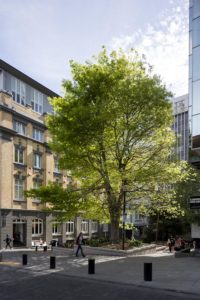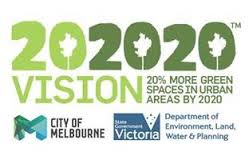 Report back from the Melbourne Urban Forest Masterclass
Report back from the Melbourne Urban Forest Masterclass
The Masterclass on 25 June 2015 was offered free by Melbourne City Council to Councils across Australia and extended to the Waitemata Local Board when they heard, through Penny Cliffin of Unitec, about the Board’s fledgling Urban Forest project. I was fortunate to be able to attend what turned out to be a well organised and fruitful day, featuring 28 speakers and 200 participants.
The day was timed for the launch of the manual ‘How to Grow an Urban Forest: A ten-step guide to help councils save money, time and share practical knowledge’ by 202020 Vision. This is ‘a mass collaboration of organisations working together to create 20% more green space in our urban areas by 2020’. In its two years of existence 202020 Vision has come up with a strategic pathway involving 40 solutions, No 1 being the Urban Forest Plan.
 Over the past 5 years Melbourne City Council has run an impressive project to map and grow their urban forest in the light of quite serious degradation caused by long term drought and successive heatwaves.
Over the past 5 years Melbourne City Council has run an impressive project to map and grow their urban forest in the light of quite serious degradation caused by long term drought and successive heatwaves.
Looking at losing 58% of their heritage trees in the next 20 years (and over 70% altogether), they have planted 12,000 trees to date and aim to plant 30,000 more. The Melbourne team worked closely with 202020 Vision to produce the manual, which is based largely on their experience of setting up and planning their Urban Forest Strategy.
The workshop presented the ten steps and speakers from across south-eastern Australia spoke of their experiences and knowledge of various topics related to the steps. I have written a more detailed report on these, which I’m happy to share.
Other interesting projects presented included: Ballarat Imagine – the Council asked people about what they loved, wanted to keep and wanted to change about their city. One main wish was ‘make our city greener’. After many workshops, surveys and submissions it was agreed to increase the tree canopy from 17-40%, largely on their boulevards.
South Australian water has made big inroads into recycling stormwater for irrigation, building 4 wastewater treatment plants, all producing recycled water. They also store stormwater in their aquifers! They trained Council staff to move water mains to allow planting of rainwater gardens, coordinating activities so that the streets are dug up only once (like our Franklin Rd project). They also changed guidelines allowing trees to be planted above sewers.
While Auckland, to date, doesn’t have drought issues (though we had half our usual June rainfall this year) and though it doesn’t get as hot as Australian cities, we certainly need shade in summer and there are many other benefits applicable here. Trees provide oxygen and sequester carbon; regulate stormwater; soften cityscapes; increase property values; improve recovery from illness, both mental and physical; encourage increased exercise, thus working against obesity and sedentary lifestyles, and create venues for relaxation.
A tree inventory is the most important and first step in an urban forest project and data might include: species, age and size; condition and replacement requirement; species performance, growth and lifespan; species diversity (especially in terms of vulnerability to disease). With specifications clear, a map of tree cover and expected tree loss can be generated, showing trees as healthy, at risk, declining and dying as well as life span, diversity, and canopy data and can enable discussion and planning.
This needs to go on an open data platform for Council and public to see, add to and scrutinise. Futuristic photos of what sites may look like at different time distances without the declining trees can help people to understand the need for replacement and the timing required. Reassessment at a later date helps verify data and track progress.
Although Auckland City appears to have a good urban forest, we are not measuring and monitoring it as well as we might. With climate change expected to wreak havoc and so much development underway – and so little tree protection available in the revised Resource Management Act – it may well be seriously under threat. I consider it our responsibility – in partnership with others – to work on replacing and enhancing our forest now so that, on public land at least, tree cover can be guaranteed over the next hundred years. We could even come to see Auckland as a city in a forest, rather than the reverse, and the trees not only as the lungs, but the heart of the city.
Deborah Yates, Waitemata Local Board member

